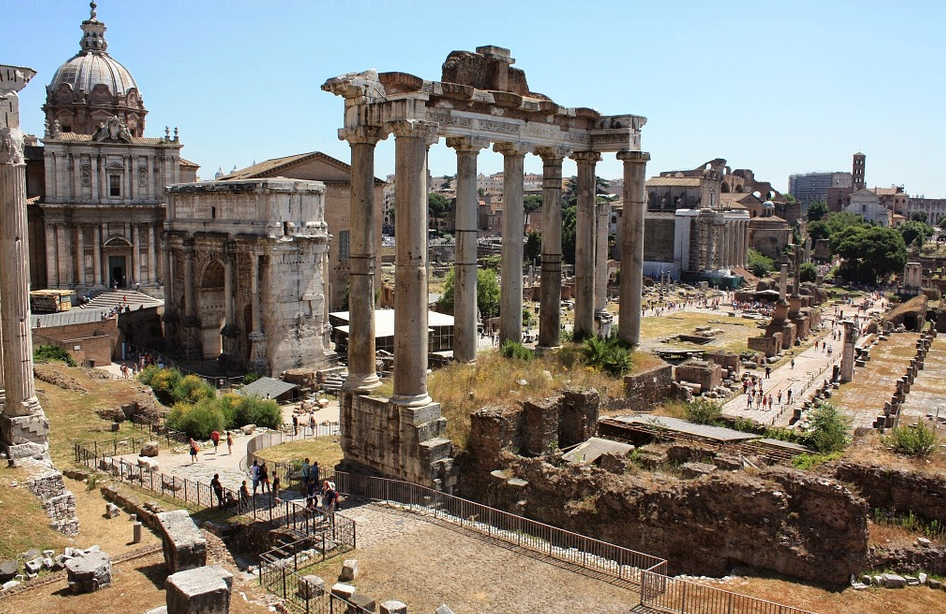
When you travel Italy, you could be interested to learn that for more than 3,000 years of its existence the country, lovingly called all over the world lo Stivale (“the Boot”) has been home for many European cultures, among which there are such important ones as Greeks and the Romans. In the course of its history of Italy has experienced many ups and downs, today being a highly-developed land that heads various world ratings. Italy is a founding member of the European Community, European Union, Council of Europe and NATO.
Just at the dawn of human society the fall of the Roman Empire in about 500 for which Italy was the heart and the numerous barbarian invasions that followed resulted in fragmentation and decay of the land.
Demographic and economical situation started to improve gradually after 1000, with the revival of cities (partially democratic Comuni), trade and arts.
Some 300 years later in the middle of 14th century an epidemic of plague swept like a typhoon all over the country killing one third of its population. However, the recovery from the terrible disease greatly stimulated economy and on the turn of the 15th century in the eras of Humanism and Renaissance Italy was the centre of Western civilization again.
In late 15th century a continuous series of invasions started which lasted around 50 years and led to the two-century Spanish possession. Such domination together with the total control of the Church inevitably led to another period of intellectual and economic stagnancy. Nevertheless, the following hegemony of Austria with its ideas of the Enlightenment helped improve the situation in the country a bit.
Centuries passed by, and in 1790-ies the Napoleonic War brought the modern ideas of equality and law into Italy, stirring the national movement for independence and completely changing its political map.
In the last part of the 19th century, industrialisation and modernisation started to pave the way to democracy. Yet there was another obstacle on this path, and it was the First World War where France and the United Kingdom were Italy’s allies. The country paid a high human and social price for the victory. It could be this depression that let the Fascists come to power. Practically all democratic liberties were abolished and the country entered into years of totalitarian regime with its inevitable repressions.
Italy came to take part in World War Two in 1940 hoping for a quick victory but suffered defeat after defeat instead, surrendering in 1943 and becoming a battlefield for almost two more years. That very year, Mussolini was overthrown and by end of war the country was liberated.
A year later, resulting from a referendum, Italy became a republic. Since then constant economic growth lifted the country among the most industrialised nations in the world.
Sightseeing
To help you avoid “embarrassment de richesse” during your travel Italy we’ve made up a small list of sightseeings and attractions that could be well worth visiting. May it be far from full, yet a glimpse on the life of Italian cities will certainly be of use.
Milan, the land’s financial power-house, is referred to as either Italy’s second or first city, depending on who you ask. It is here that ‘deals are made’. Despite lacking the medieval charm due to plenty of rebuilding it still has much to offer a visitor, namely such simple pleasures as strolling in Brera and the Navigli districts or more cost-consuming designer shopping. Bear in mind that winters are usually cold and misty, and summers sultry here.
The Amalfi Coast presents a mountainous coastline with some towns and fishing villages south of Naples and is a major tourist attraction. The settlements are built at a very steep angle that is why streets are often zigzagging. Tourism being the area’s main employer, here you will always meet friendly service and a variety of attractions for your money, but – the prices may be biting.
Palermo, Sicily’s regional capital, is a city of contrasts. This busy port houses quite a number of tourist attractions. Yet, it is probably best known for being hotbed for organized crime, which however may be only adding to its magnetism. Don’t miss the Norman Cattedrale and La Martorana, a Norman church, Puppet Museum and the Vucciria market. Most daring of you could also visit Convento dei Cappuccini’s catacombs lined with the dead.
Frascati, a hill-town of the Castelli Romani complex situated not far from Rome, is a popular day trip destination. Both tourists and nationals come here just to relax, enjoy the change of pace, take a breath of clean air, and treat themselves to good food. The gardens are open to the public and free. Be sure to try some of the famous Frascati wine.
Sorrento is located on a plain overlooking Naples and embracing Vesuvius. The charming town is exceedingly popular with tourists and the English language is widely spoken here. Lack of actual ‘sights’ is made up by numerous panoramic views and pleasant spots, and the wide range of accommodation options in will make it an ideal destination for everyone who travels to Italy. Piazza Tasso, with its numerous cafes, is the tourist focal point.
Another lovely Italian town is Verona, in the Veneto. The place is rich in archaeological sites and has a beautiful historic center with narrow streets and palazzos. The Roman Arena, the city’s grandest sight, where great concerts and operas are performed, competes for its popularity with the so-called ‘Juliet’s balcony’ well known for every romanticist around the world.


